Recent Posts
Restoring Indoor Air Quality After Water Damage
6/12/2024 (Permalink)
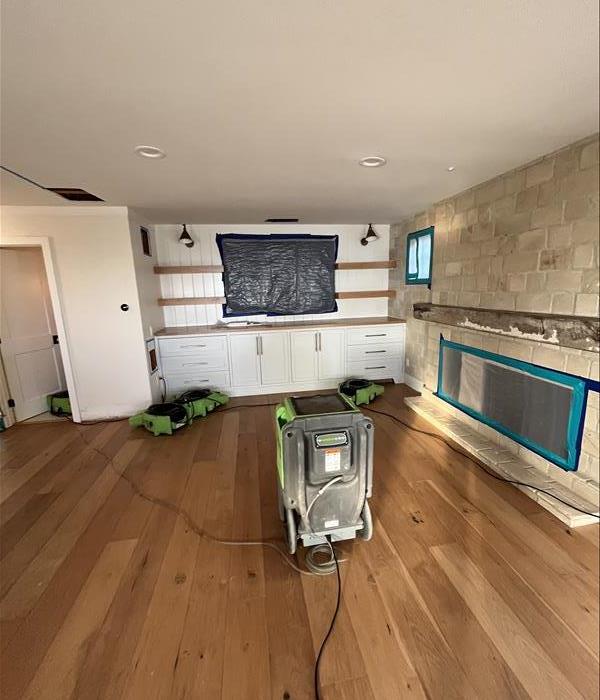 Restoring indoor air quality after water damage requires prompt action, expertise, and specialized equipment.
Restoring indoor air quality after water damage requires prompt action, expertise, and specialized equipment.
Water damage not only wreaks havoc on your property but can also compromise the quality of the air you breathe indoors. Mold, mildew, and other contaminants thrive in damp environments, posing serious health risks to you and your loved ones. At SERVPRO®, we understand the importance of restoring indoor air quality after water damage to ensure a safe and healthy living environment for our customers. In this blog post, we'll explore effective strategies for restoring indoor air quality post-water damage.
Identifying and Addressing the Source of Water Damage
The first step in restoring indoor air quality is to identify and address the source of water damage promptly. Whether it's a burst pipe, a leaking roof, or a flood, it's crucial to stop the water intrusion to prevent further damage and mold growth. Our certified technicians at SERVPRO are equipped with state-of-the-art equipment to detect hidden moisture and address the root cause of the problem.
Water Extraction and Drying
Once the source of water damage is addressed, the next step is water extraction and drying. Our team utilizes powerful pumps and industrial-grade dehumidifiers to remove excess water and moisture from the affected areas efficiently. Proper drying is essential to prevent mold growth and restore indoor air quality.
Mold Remediation
Mold can quickly spread in damp environments, compromising indoor air quality and posing health risks. Our mold remediation experts at SERVPRO are trained to identify and eliminate mold colonies effectively. We use specialized equipment and techniques to ensure thorough mold removal and prevent recurrence.
Air Filtration and Purification
To further enhance indoor air quality, we employ advanced air filtration and purification techniques. Our HEPA air scrubbers capture airborne particles, including mold spores, dust, and other contaminants, to improve air quality and create a healthier living environment. Additionally, we use antimicrobial agents to inhibit mold growth and prevent odors.
Restoration and Reconstruction
In severe cases of water damage, restoration and reconstruction may be necessary to restore your property to its pre-damaged condition. Our team at SERVPRO offers comprehensive restoration services, including structural repairs, drywall replacement, and carpet installation, to ensure your home or business is fully restored.
Preventive Measures
Finally, we provide valuable tips and preventive measures to help our customers maintain optimal indoor air quality and prevent future water damage. Regular maintenance, prompt leak repairs, and proper ventilation are essential to safeguarding your property and ensuring a healthy indoor environment.
Restoring indoor air quality after water damage requires prompt action, expertise, and specialized equipment. At SERVPRO, we are committed to helping our customers navigate the challenges of water damage restoration and ensure a safe and healthy living environment. If you're facing water damage issues, don't hesitate to contact us for professional assistance. Your health and safety are our top priorities.
Handling Fallen Trees and Debris After a Storm
5/15/2024 (Permalink)
When nature unleashes its fury in the form of a storm, the aftermath can leave a trail of destruction, with fallen trees and debris scattered across landscapes. As the leading experts in disaster cleanup, SERVPRO® understands the challenges homeowners face in the wake of such events. In this blog post, we provide essential tips and guidance on safely and efficiently handling fallen trees and debris after a storm.
- Safety First: Before embarking on any cleanup efforts, prioritize safety. Assess the area for any potential hazards such as downed power lines or unstable structures. Wear protective gear including gloves, sturdy footwear, and eye protection to guard against injuries from sharp objects or flying debris.
- Assess the Damage: Survey your property to determine the extent of the damage. Take note of any fallen trees, branches, or debris blocking access points or posing risks to structures. If the damage is extensive or if you're unsure about the safety of tackling the cleanup yourself, it's advisable to seek professional assistance from a reputable restoration company like SERVPRO.
- Clearing Fallen Trees and Debris: Begin by removing smaller debris and branches from pathways and driveways to restore access to your property. Exercise caution when moving heavy objects and enlist the help of others if needed. For larger trees or branches, consider hiring trained professionals with the expertise and equipment to safely remove them without causing further damage.
- Dispose of Debris Properly: Proper disposal of storm debris is crucial for both safety and environmental reasons. Separate organic materials such as branches and leaves from non-biodegradable items like plastic or metal. Check with local authorities for guidelines on debris disposal and recycling options available in your area.
- Inspect for Structural Damage: After clearing the immediate debris, conduct a thorough inspection of your property for any signs of structural damage. Look for cracks in walls, roof damage, or leaning trees that could pose a risk of collapse. If you suspect structural issues, contact a qualified contractor or structural engineer to assess the damage and recommend repairs.
- Document Damage for Insurance Claims: Take photographs or videos of the storm damage, including fallen trees and debris, to support any insurance claims you may need to file. Documenting the extent of the damage can help expedite the claims process and ensure you receive fair compensation for repairs and restoration efforts.
Handling fallen trees and debris after a storm requires careful planning, safety precautions, and sometimes professional assistance. By following these guidelines and seeking help when needed, you can navigate the cleanup process efficiently and restore your property to its pre-storm condition. For expert assistance with storm damage cleanup and restoration, trust the professionals at SERVPRO to deliver prompt, reliable service when you need it most.
Protecting your pets from home fires
4/19/2024 (Permalink)
As proud pet owners, our four-legged companions bring joy, love, and endless moments of happiness to our lives. However, in the midst of creating a safe and comfortable home for our furry friends, we may overlook a critical aspect of their well-being – fire safety. At SERVPRO®, we understand the importance of safeguarding your pets from potential home fires. In this blog post, we'll share essential tips and insights to help you create a fire-safe environment for your beloved pets.
Pet-Proofing Your Home
Start by identifying potential fire hazards within your living space. Ensure that electrical cords are out of reach and secure appliances to prevent curious pets from knocking them over. Investing in flameless candles and pet-friendly space heaters can also minimize the risk of accidental fires.
Fire Emergency Plan
Just like your family, your pets need a designated escape plan in case of a fire emergency. Practice fire drills with your pets, so they become familiar with evacuation procedures. Keep leashes, carriers, and other pet essentials in an easily accessible location, making it easier to grab them quickly during an evacuation.
Pet Identification
In the chaos of a fire, pets can become disoriented or scared, making it challenging to locate them. Ensure your pets are microchipped and have visible identification tags with up-to-date contact information. This small step can significantly increase the chances of a safe reunion in case of separation during an emergency.
Safe Spaces
Designate specific areas in your home where your pets can find refuge in case of a fire. Teach them to go to these safe spaces when they hear the sound of a smoke alarm. Make these areas easily accessible and free from potential fire hazards.
Fire Prevention Tools
Equip your home with smoke detectors and fire extinguishers, paying special attention to areas where your pets spend most of their time. Regularly test smoke alarms and replace batteries to ensure they are in working order. These simple steps can provide early detection and containment of a potential fire.
Pet Rescue Alert Stickers
Place pet rescue alert stickers on windows and doors to inform firefighters of the number and types of pets in your home. This vital information can expedite the rescue process and ensure that every member of your family, including your pets, is accounted for.
Prioritizing the safety of your pets in the event of a home fire is a responsibility that should not be overlooked. By implementing these SERVPRO-approved tips, you can create a secure environment for your furry friends and provide them with the protection they deserve. Stay proactive, stay prepared, and safeguard your home and pets from the unexpected. Your pets will thank you for it.
The SERVPRO Mold Remediation Process: Step by Step
3/13/2024 (Permalink)
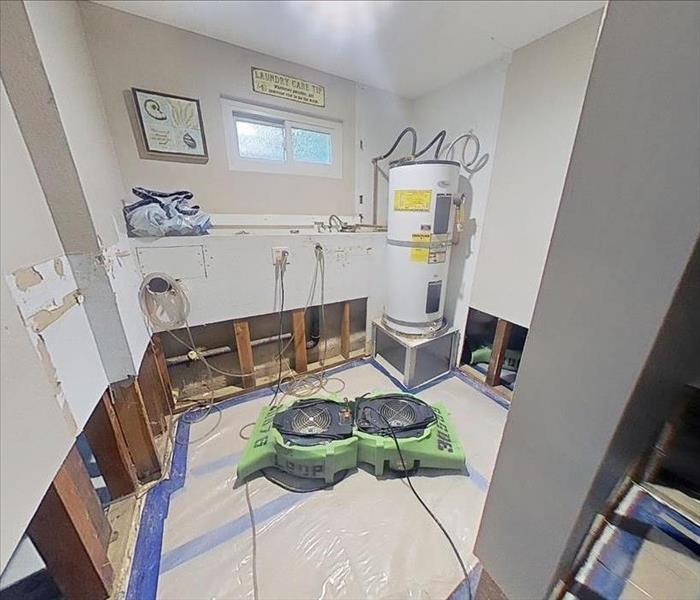 Our expert team is here to guide you through the SERVPRO Mold Remediation Process, ensuring a thorough and effective solution to your mold issues.
Our expert team is here to guide you through the SERVPRO Mold Remediation Process, ensuring a thorough and effective solution to your mold issues.
At SERVPRO®, we understand the stress and concern that mold growth can bring to homeowners and business owners alike. Mold not only poses a threat to the structural integrity of your property but also to your personal belongings. That's why our expert team is here to guide you through the SERVPRO Mold Remediation Process, ensuring a thorough and effective solution to your mold issues.
Step 1: Inspection and Assessment
The first crucial step in our mold remediation process is a comprehensive inspection and assessment of your property. Our certified professionals use state-of-the-art technology to identify the extent of the mold infestation and the moisture sources that fuel its growth. This step is vital for developing a tailored remediation plan.
Step 2: Containment
Once the mold-affected areas are identified, our team employs advanced containment techniques to prevent the spread of mold spores to uncontaminated areas. This includes the use of barriers and negative air pressure to isolate the affected space, safeguarding the rest of your property.
Step 3: Filtration
To further ensure the containment of mold spores, SERVPRO utilizes powerful air filtration equipment equipped with High-Efficiency Particulate Air (HEPA) filters. These filters trap microscopic particles, preventing the recurrence of mold growth and maintaining a mold neutral indoor environment.
Step 4: Removal of Mold-Infested Materials
Our team proceeds to remove and dispose of materials contaminated with mold. This may include drywall, carpeting, and other porous items that cannot be effectively cleaned. This step is essential to eliminate the source of mold and prevent its recurrence.
Step 5: Cleaning and Sanitization
Once the mold-infested materials are removed, the affected surfaces are thoroughly cleaned and sanitized using industry-approved antimicrobial treatments. This ensures the elimination of any remaining mold spores and prevents the development of new colonies.
Step 6: Restoration
After completing the remediation process, our focus shifts to restoring your property to its pre-mold condition. This may involve minor repairs, such as replacing drywall or flooring, to bring your home or business back to a safe and comfortable state.
At SERVPRO, our mold remediation process is designed to provide comprehensive and effective solutions tailored to your specific needs. By following these step-by-step procedures, our expert team ensures that your property is not only free from mold but also restored to its original state. Trust SERVPRO for a seamless and thorough mold remediation experience, bringing peace of mind to property owners facing mold challenges.
Top 4 Tips for Mold Prevention Post Water Damage
2/14/2024 (Permalink)
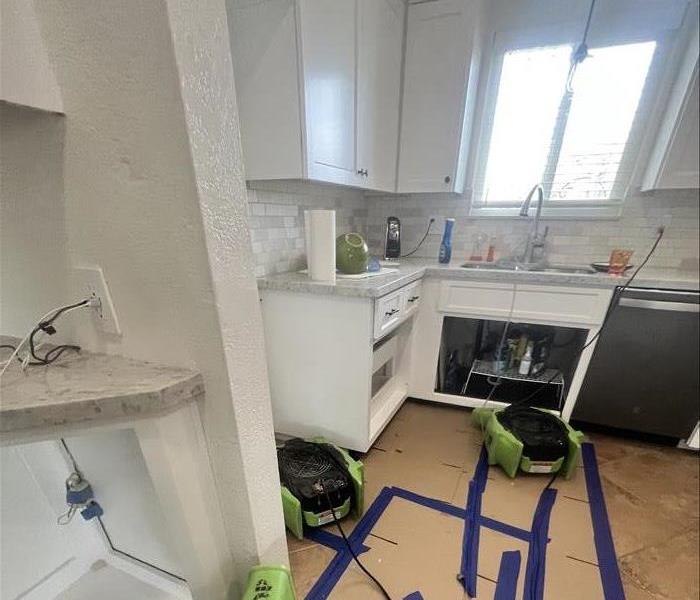 Immediate action in extracting standing water is crucial.
Immediate action in extracting standing water is crucial.
Water damage can quickly turn into a mold infestation if not addressed promptly and properly. As an experienced professional in the restoration industry, Let's delve deeper into the top 4 effective ways to prevent mold growth after water damage:
1. Swift Water Extraction
Immediate action in extracting standing water is crucial. Mold can start developing within 24-48 hours of water exposure. Use pumps, wet/dry vacuums, or professional extraction services to remove excess water quickly. Make sure that all affected areas, including carpets, flooring, and walls, are thoroughly dried to prevent mold growth.
2. Remove Damaged Materials
Porous materials, once exposed to water, become breeding grounds for mold. It's crucial to throw away and replace irreparably damaged materials like soaked carpets, insulation, or drywall. Porous materials that retain moisture are almost certain to foster mold growth, making removal and replacement essential for preventing its spread.
3. Clean and Disinfect
Thorough cleaning and disinfection after water damage is crucial. Utilize appropriate cleaning agents or solutions to sanitize all affected surfaces. This step helps eliminate any existing mold spores and prevents the growth of new ones. Make sure you focus on areas that were directly exposed to water to prevent mold from resurging.
4. Monitor Humidity Levels
Lastly, maintaining indoor humidity levels below 60% significantly inhibits mold growth. Regularly monitor and control humidity using dehumidifiers, especially in high-moisture areas like basements or bathrooms. Lowering humidity levels helps prevent mold from spreading and assists in drying out any residual moisture from the affected spaces.
By addressing water damage quickly, employing thorough drying techniques, removing irreparably damaged materials, implementing proper cleaning and disinfection methods, and regulating indoor humidity levels, homeowners can effectively prevent mold growth after water damage. These focused actions significantly reduce the risk of mold infestation and protect both property and occupants from potential hazards associated with mold.
What to Expect After a Storm Surge
1/14/2024 (Permalink)
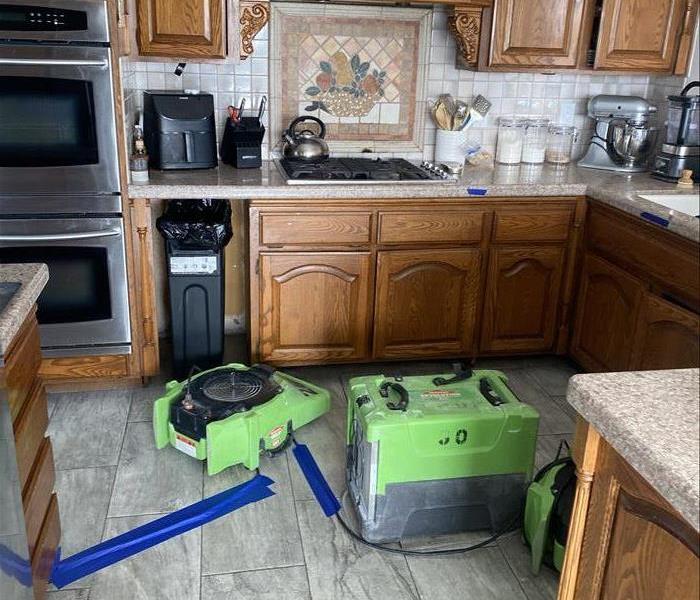 Our trained technicians have the expertise, equipment, and resources to handle storm damage restoration efficiently.
Our trained technicians have the expertise, equipment, and resources to handle storm damage restoration efficiently.
We understand the distress and upheaval that a storm surge can cause to individuals, families, and communities. The aftermath of such a natural disaster can be overwhelming, leaving behind destruction and chaos. In this blog, we will tell you more about what to expect after a storm surge and offer essential guidance to assist in the recovery process.
What is a Storm Surge?
A storm surge occurs when a storm, typically a hurricane or tropical cyclone, pushes a large volume of water towards the shore. This surge of water can inundate coastal areas, causing severe flooding, property damage, and posing significant risks to life and safety.
What to Expect After a Storm Surge
- Safety First
Safety should be the primary concern after a storm surge. Stay away from floodwaters, which may contain hazardous materials, debris, and hidden dangers. Follow local authorities' instructions and avoid re-entering your property until it's deemed safe.
- Assessing Damage
Once it's safe to return, assess the damage to your property. Document the damage thoroughly by taking photographs or videos. This documentation will be essential when filing insurance claims.
- Water Damage
Storm surges often lead to extensive water damage. Water can seep into walls, flooring, furniture, and electrical systems, causing structural issues and mold growth if not addressed promptly. SERVPRO of Costa Mesa specializes in water damage restoration and can help mitigate these issues efficiently.
- Structural Integrity
Check for any signs of structural damage to your property. Avoid entering if you suspect compromised structural integrity and seek professional help to evaluate and repair the damage.
- Mold Concerns
Mold can start growing within 24-48 hours after water damage. Be vigilant for musty odors, discolored walls or ceilings, and visible mold growth. Our SERVPRO® team also offers mold remediation services to address these concerns effectively.
- Insurance Claims
Contact your insurance company promptly to begin the claims process. Provide them with documented evidence of the damage and keep records of all communication for reference.
- Professional Restoration Services
Engage professional restoration services like our SERVPRO team to assist in the cleanup, restoration, and rebuilding process. Our trained technicians have the expertise, equipment, and resources to handle storm damage restoration efficiently.
Recovering from a storm surge can be challenging, but with the right knowledge and support, it's possible to restore your property and move forward. At SERVPRO of Costa Mesa, we are committed to helping individuals and communities navigate through these difficult times. Remember, safety comes first, and seeking professional assistance for restoration is crucial for a successful recovery.
Stay safe, stay informed, and know that recovery is possible with the right support.
Understanding Fireproofing and its Importance
12/20/2023 (Permalink)
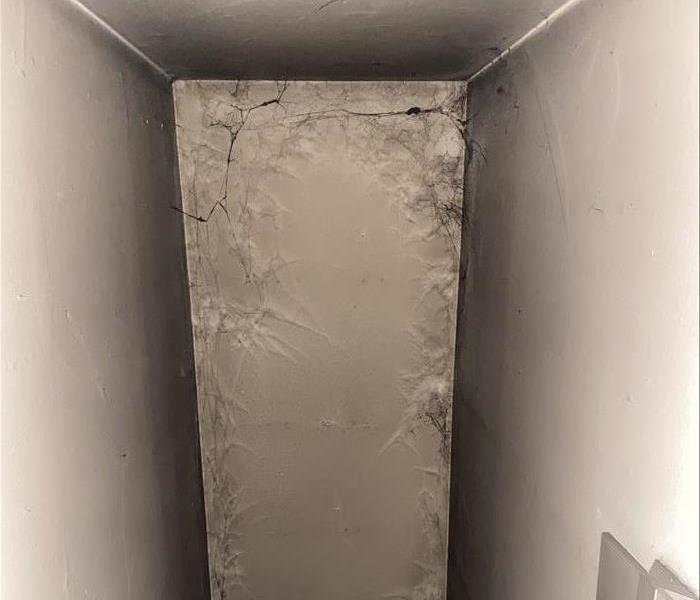 Incorporating fireproofing measures is a proactive step toward enhancing fire safety.
Incorporating fireproofing measures is a proactive step toward enhancing fire safety.
In this blog, we delve into the concept of fireproofing, a critical aspect of protecting your home or business against the devastating effects of fires. We'll explore what fireproofing is and when it is essential to ensure the safety of your property.
Understanding Fireproofing
Fireproofing is the process of applying materials and techniques to protect structures and materials from the destructive effects of fire. The primary goal of fireproofing is to delay or prevent the spread of fire, minimize damage, and buy valuable time for occupants to evacuate safely.
When Is Fireproofing Needed?
Commercial and Industrial Buildings
Fireproofing is particularly crucial in commercial and industrial settings. These structures often house valuable equipment, sensitive materials, and a significant number of occupants. Fireproofing measures, such as fire-resistant coatings and materials, help maintain the structural integrity of the building and reduce the risk of rapid fire spread.
Residential Homes
While residential structures may not require the same level of fireproofing as commercial buildings, fireproofing materials can still offer valuable protection. Fire-resistant coatings on walls, fire-resistant roofing materials, and properly sealed fire-rated doors and windows can significantly enhance home safety.
Historic and Cultural Buildings
Preserving the heritage and cultural significance of historic buildings is essential. Fireproofing can be crucial in protecting these structures from fire damage. Careful restoration and the use of fire-resistant materials can help maintain their historical value while improving fire safety.
High-Risk Areas
Geographic locations prone to wildfires, such as those with a history of forest fires or urban-wildland interface areas, greatly benefit from fireproofing measures. These can include creating defensible space, using fire-resistant building materials, and proper landscaping practices.
Industrial Facilities with Hazardous Materials
Industries that deal with hazardous materials, chemicals, or combustible materials should prioritize fireproofing. Specialized fire-resistant coatings, storage practices, and safety protocols are essential to prevent catastrophic fires and hazardous material release.
Incorporating fireproofing measures is a proactive step towards enhancing fire safety and protecting your property. Understanding when and where fireproofing is necessary is pivotal for protecting your home, business, or historic structures. By implementing the appropriate fireproofing strategies, you can significantly reduce the risk of fire-related damage and improve the overall safety of your environment.
For more in-depth insights on fire safety, property protection, and disaster recovery, continue to follow the SERVPRO® of Costa Mesa blog. And remember, when you require professional fire damage restoration or expert fireproofing services, our SERVPRO® team is here to support you.
What You Need to Know About Selling a House With Mold
11/14/2023 (Permalink)
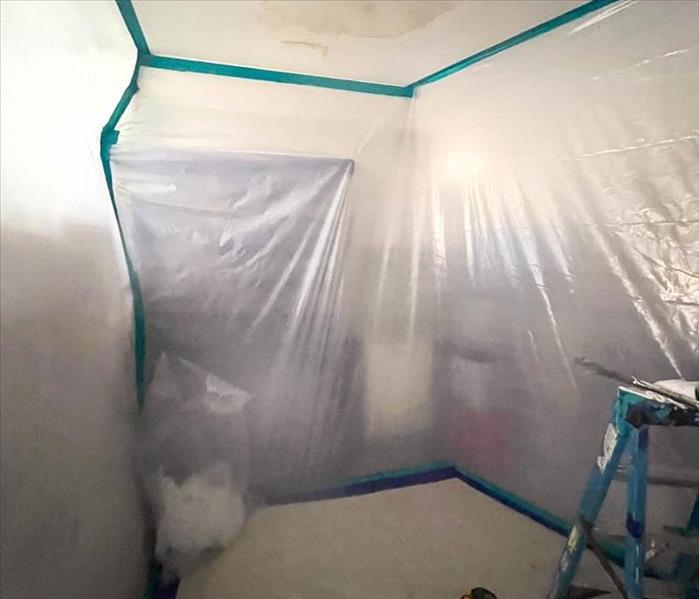 Mold issues can be a significant roadblock when selling a house.
Mold issues can be a significant roadblock when selling a house.
Today, we'll delve into a topic that many homeowners might face: selling a house with mold issues. Costa Mesa's beautiful coastal location comes with its share of moisture challenges, and understanding how to navigate mold concerns during the sale process is crucial. In this blog, we'll provide you with the knowledge you need to make informed decisions when selling a property that may have a mold problem.
Understanding the Impact of Mold on the Sale of Your House
Mold issues can be a significant roadblock when selling a house. Potential buyers may be wary of purchasing a property with mold, and lenders may hesitate to approve loans for homes with mold-related concerns. To successfully sell your house, it's essential to be well-informed about mold's impact on the sale process.
Property Value
Mold problems can negatively affect your property's value. Potential buyers may seek a reduced price to accommodate the cost of mold remediation, or they may simply walk away from the deal.
Disclosure Requirements
In California, sellers are legally obligated to disclose any known mold problems. Failing to do so can lead to legal and financial consequences down the road.
Inspections and Buyer Concerns
Buyers often request mold inspections. If mold is discovered, it can raise concerns, potentially leading to delays or even the termination of the sale.
Lender Approval
Lenders may hesitate to approve loans for homes with known mold issues, making it challenging for buyers to secure financing.
Dealing With Mold Issues When Selling a House
Before listing your property, consider hiring a professional mold inspector to identify the extent of the problem. Understanding the severity of the mold issue is the first step in addressing it. If mold is present, it's typically best to address the problem before listing the property. Mold remediation by certified professionals can help ensure the issue is properly resolved.
Fulfill your legal obligation by disclosing any known mold problems to potential buyers. Honesty is essential in the real estate market. When disclosing mold problems, it's helpful to offer solutions, such as proof of mold remediation and any preventative measures you've taken.
Selling a house with mold concerns requires careful planning, transparency, and effective resolution of the issue. Mold problems can impact the sale, but with the right approach, you can successfully navigate this challenge. SERVPRO® of Costa Mesa is here to assist with any mold-related situation, from inspection to remediation. For more information or to schedule an inspection, contact us today and ensure a seamless sale of your property.
How to Safely Dispose Water-Damaged Materials and Debris
10/10/2023 (Permalink)
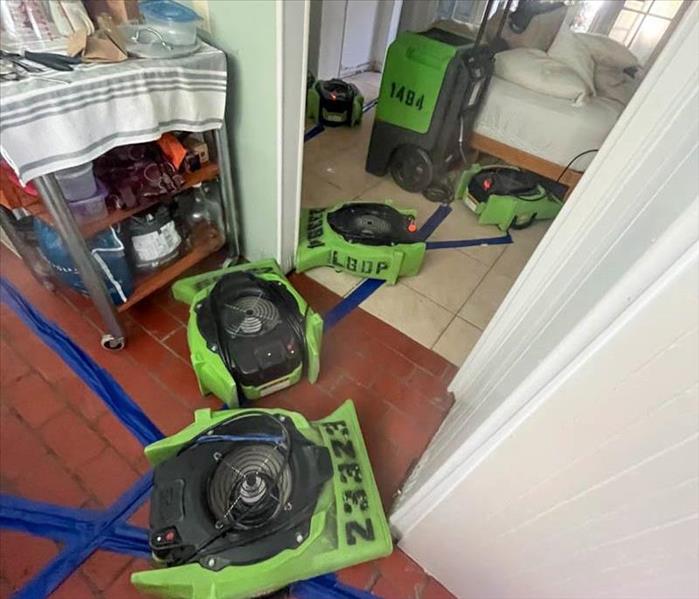 Safe disposal of water-damaged materials and debris is an essential step in the aftermath of any water-damage event.
Safe disposal of water-damaged materials and debris is an essential step in the aftermath of any water-damage event.
Dealing with water damage is never easy, but once the cleanup process is underway, another important task comes into focus: the proper disposal of water-damaged materials and debris. Knowing how to handle this step is crucial to protect yourself and the environment. In this blog, we will provide you with essential guidelines and tips for the safe disposal of water-damaged materials and debris after a flood or any other water-damage event.
Post-Water Damage Cleanup
Before we dive into the disposal process, it's essential to remove the damaged materials and debris from your property. This may include items like carpets, furniture, insulation, drywall, and personal belongings. Sorting these materials appropriately is crucial to ensure a smooth disposal process.
Hazardous Materials
During water damage incidents, there is a possibility of encountering hazardous materials. Substances such as lead-based paint, asbestos, mold-infested materials, and chemicals from household products may be present. Identifying these harmful substances is crucial for safe disposal. It is recommended to seek professional assistance in handling and disposing of hazardous materials properly, ensuring your safety and compliance with local regulations.
Working with Your Local Waste Management System
Proper disposal of water-damaged materials requires working in tandem with your local waste management system. They provide guidelines and resources for handling different types of debris. Reach out to your local municipality to inquire about any special instructions or regulations, such as guidelines for sorting debris and hazardous waste pickup or drop-off locations. Adhering to these guidelines helps protect the environment and avoids potential fines.
Avoiding Environmental Damage
Water-damaged materials, if not disposed of properly, can cause harm to the environment. It's vital to ensure that no hazardous waste enters local streams, rivers, or groundwater sources. Avoiding environmental damage can be achieved by working with environmental regulators and following their guidance. They can provide information on safe disposal methods and alert you to any specific environmental concerns related to your area.
Safe disposal of water-damaged materials and debris is an essential step in the aftermath of any water-damage event. Proper handling and disposal protect your health, prevent environmental damage, and ensure compliance with local regulations. Remember to remove damaged materials carefully, identify and handle hazardous substances appropriately, and work with your local waste management system and environmental regulators. By following these guidelines and tips, you can contribute to a safe and sustainable recovery process.
We hope this guide has provided you with valuable insights on how to handle the safe disposal of water-damaged materials and debris. If you have any further questions or require professional assistance with water damage cleanup and restoration, don't hesitate to reach out to our experienced team at SERVPRO® of Costa Mesa.
What to Do After a Storm: Clearing Fallen Trees and Debris in Costa Mesa, CA
9/13/2023 (Permalink)
When nature's fury strikes, dealing with fallen trees and debris can be daunting. Join us as we explore practical steps to safely and efficiently manage the aftermath and restore your property to its pre-storm condition.
1. Safety First: Assessing Hazards
After a storm, prioritize safety above all else. Survey your property for downed power lines, unstable trees, and other hazards. Keep a safe distance and contact the appropriate authorities if you encounter any life-threatening situations.
2. Document the Damage: Before Clearing Begins
Before you start clearing fallen trees and debris, document the damage. Take photos and videos to create a visual record for insurance purposes. This documentation will be crucial when filing claims and working with professionals.
3. Clear Pathways: Opening Access
Begin by clearing pathways to ensure safe movement around your property. Remove smaller debris like branches and twigs to create clear access points and assess the extent of the damage.
4. Assess Tree Damage: Safety and Restoration
Evaluate trees that have fallen or are damaged. If a fallen tree has caused structural damage or poses a risk, seek professional assistance. An arborist can assess the tree's condition and recommend safe removal or restoration.
5. Proper Tree Removal: Expertise Matters
Removing fallen trees requires specialized knowledge and equipment. Consult with professional tree removal services to ensure safe and efficient removal without causing additional damage.
6. Sort and Dispose: Organized Cleanup
Sort debris into categories like organic, recyclable, and non-recyclable materials. This organized approach makes disposal more manageable and environmentally friendly. Check with local disposal centers for guidelines.
7. Assess Property Damage: Restoration Steps
Inspect your property for damage caused by fallen trees and debris. Address roof damage, broken windows, and structural issues promptly to prevent further complications.
8. Professional Restoration: Expert Assistance
Engage professional restoration services like SERVPRO to assess and restore your property. Storm damage can lead to hidden issues like water intrusion and mold growth, which experts can address comprehensively.
9. Prevent Future Issues: Landscape Planning
Consider the storm's impact on your landscaping and plan for future resilience. Consult with landscaping professionals to choose tree species that are less susceptible to storm damage and strategically position them.
Restoring Tranquility in Costa Mesa
By following these steps, you're taking proactive measures to handle fallen trees and debris after a storm. Efficient and safe debris removal is essential for restoring normalcy to your Costa Mesa property. If storm-related damage occurs, SERVPRO of Costa Mesa is here to assist in the restoration process, helping you recover quickly and efficiently.






 24/7 Emergency Service
24/7 Emergency Service


